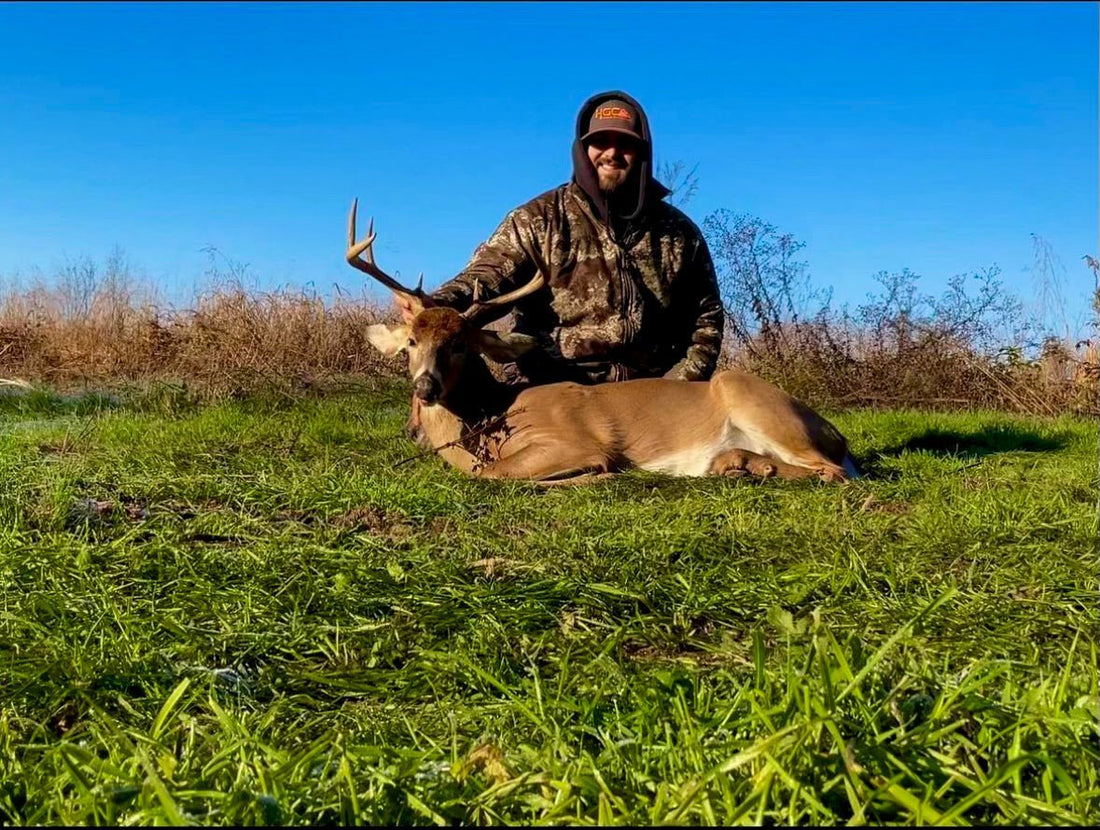
Late-Season Whitetail Hunting
Mastering Late-Season Whitetail Hunting: Proven Strategies for Success
Late-season whitetail hunting presents one of the greatest challenges in the sport, but for hunters who understand deer behavior and adjust their strategy accordingly, it can also be one of the most rewarding times to tag a mature buck. As winter sets in and the rut fades, whitetails shift their focus from breeding to survival, prioritizing food, warmth, and security. If you want to capitalize on this critical period, you must adapt to changing whitetail movement patterns, anticipate their feeding habits, and outsmart highly pressured bucks. Below, we break down key late-season hunting tactics, essential gear recommendations, and expert tips to help you maximize your success in the field.
Key Factors That Impact Late-Season Whitetail Movement
Cold Weather Patterns and Deer Activity
Temperature shifts play a significant role in late-season deer movement. As the mercury drops, whitetails increase daytime activity to seek out high-energy food sources. Cold fronts, snowfall, and barometric pressure changes can trigger deer to move during daylight hours, providing prime hunting opportunities. The best days to hunt are those following a sudden drop in temperature when bucks emerge from thick cover to replenish lost energy reserves.
High-Calorie Food Sources Keep Deer Moving
During the late season, a whitetail’s number one priority is food. Bucks depleted from the rut seek out high-calorie sources such as standing corn, soybeans, winter wheat, brassicas, and acorns. If you want to consistently locate deer in the late season, focus your efforts on agricultural fields, oak flats, food plots, and other key feeding areas. Whitetails follow reliable food sources, so patterning these locations can lead to a successful hunt.
How Hunting Pressure Alters Whitetail Behavior
By the late season, deer have been heavily pressured by hunters, causing them to alter their routines. Mature bucks become nocturnal, relocate to thick cover, and avoid highly trafficked hunting areas. To counteract this, adopt a low-impact approach by hunting undisturbed areas, using quiet entry and exit routes, and timing hunts for midday movement when deer feel safer venturing out.
Top Strategies for Late-Season Whitetail Hunting
1. Focus on High-Energy Food Sources
Locating food is the key to late-season whitetail hunting success. Identify and hunt over the best remaining food sources, such as standing corn, soybean fields, brassica plots, or mast-producing oak trees. If possible, gain access to private land near prime agricultural areas where deer congregate. Setting up near reliable food sources can provide daylight shot opportunities on mature bucks.
2. Deploy Trail Cameras to Pattern Whitetail Movement
Using trail cameras is one of the most effective ways to pattern late-season bucks. Place cameras near food sources, travel corridors, and bedding areas to track movement and determine when deer are active. Cellular trail cameras allow you to monitor activity remotely, minimizing disturbance while collecting valuable data on target bucks. Adjust stand locations based on recent camera intel to maximize your chances of an encounter.
3. Hunt Cold Fronts and Weather Changes
Late-season deer movement is heavily influenced by weather patterns. Bucks are more likely to be active during daylight hours after a cold front or storm. Monitor the forecast and prioritize hunting after a sudden drop in temperature, snowfall, or a change in barometric pressure. These conditions often trigger increased feeding activity, making it an ideal time to be in the field.
4. Target High-Traffic Zones Between Bedding and Feeding Areas
Whitetails travel along well-established routes between bedding areas and feeding sites. Focus on pinch points, funnels, creek crossings, and transition zones where deer move naturally. South-facing slopes provide warmth during cold weather and often serve as preferred bedding locations. By intercepting deer along these travel routes, you increase your chances of encountering a mature buck in daylight.
5. Stay Persistent and Adapt Your Strategy
Late-season hunting requires patience and flexibility. If your stand location isn’t producing results, relocate based on deer movement patterns. If whitetails have shifted feeding areas, adjust your approach to target new food sources. Keep an eye on trail camera data, sign such as fresh tracks or rubs, and stay committed to the hunt. Successful late-season hunters are those who remain adaptable and persistent.
Essential Gear for Late-Season Whitetail Hunting
Layering for Cold Weather Hunts
Staying warm is crucial for maintaining focus and endurance during late-season hunts. Use moisture-wicking base layers to keep dry, insulated mid-layers for warmth, and windproof, waterproof outer layers to block the elements. Investing in high-quality gear ensures comfort in extreme conditions, allowing you to stay in the field longer.
Portable Stands and Ground Blinds for Adaptability
Late-season bucks are wary of pressure, making mobility a valuable asset. Lightweight climbing stands or portable ground blinds allow you to adjust your setup based on changing deer movement. A well-placed ground blind near a food source can provide concealment while protecting you from harsh weather conditions.
Trail Cameras for Remote Scouting
Monitoring whitetail movement without physically disturbing an area is essential in late-season hunting. Cellular trail cameras provide real-time updates on deer activity, allowing you to fine-tune your hunting strategy without alerting deer to your presence. Standard trail cameras placed strategically can also provide valuable intel on late-season patterns.
Final Thoughts: Late-Season Whitetail Hunting Rewards the Persistent
Late-season whitetail hunting is a mental and physical challenge, but it offers incredible opportunities for hunters who are willing to adapt. By focusing on high-calorie food sources, monitoring deer movement with trail cameras, timing hunts around cold fronts, and targeting high-traffic travel routes, you can increase your chances of success. Equip yourself with the right gear, stay patient, and remain persistent. The hunters who put in the work during the late season are often rewarded with a hard-earned, mature buck when others have given up.
